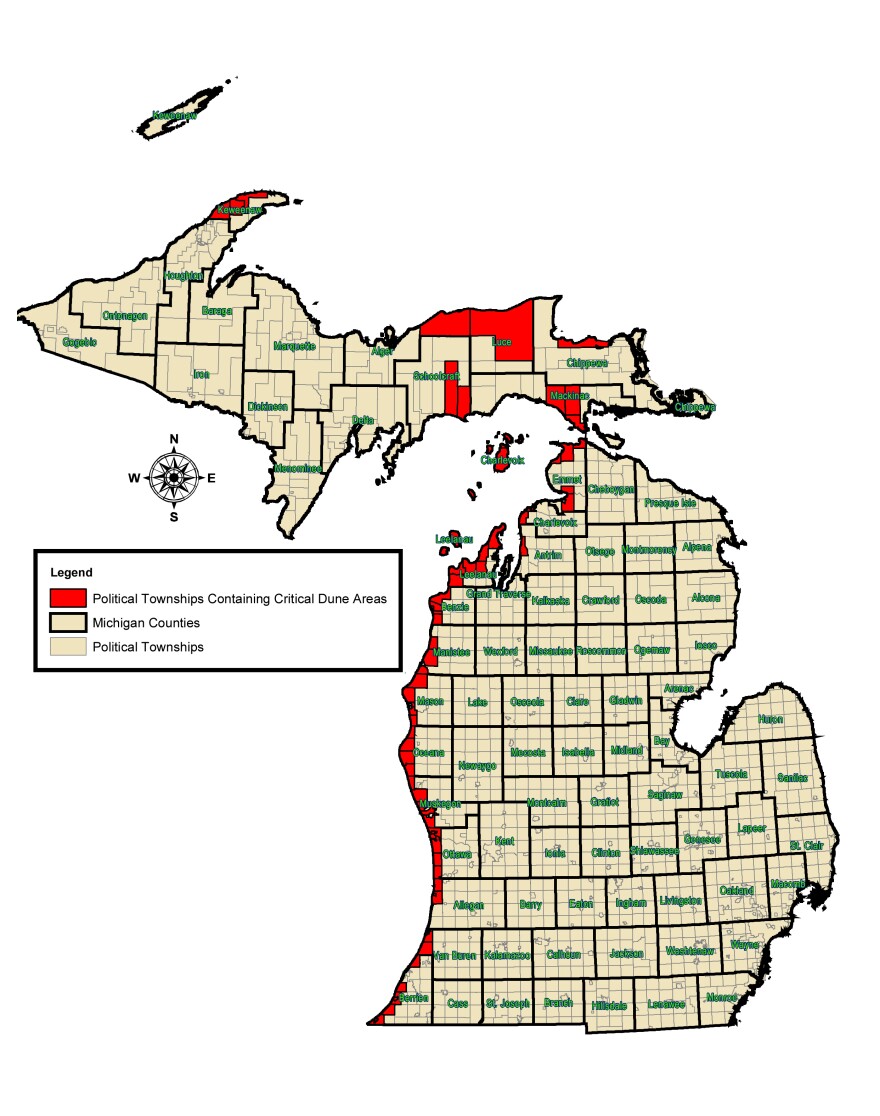Over 70,000 acres of dunes are recognized as "critical dunes," out of the 275,000 acres of dunes in the state of Michigan.

In 1976, the Michigan Legislature created the Sand Dune Protection and Management Act.
A small book was published this summer by the Michigan Department for Environmental Quality illustrating ways to safely build homes in these critical dune areas.
MDEQ teamed up with an organization called Preserve the Dunes.
Preserve the Dunes is a non-profit that was started in 1997 in Van Buren and Berrien Counties. The group has sponsored two competitions recognizing homes built in critical dune areas. Critical Dunes Residential Design Awards were awarded in 2006 and again in 2012.
The purpose of the project is to create a structure with a design "that is responsive to the project's setting and that safeguards the dunes."
Michigan's lakeshores are a destination. Our sand dunes and lakes attract tourists from all over the country who seek to spend as much time as possible on Lake Michigan or hiking through the bluffs.
Too much human contact can damage dunes, and houses built in dune areas can do a lot of damage as well.
Critical Dune Areas (CDAs) are a "unique, irreplaceable and fragile resource that provide significant recreational, economic, scientific, geological, scenic, botanical, educational, agricultural, and ecological benefit to the people of this state and to the people from other states and countries who visit this resource." -- FromHow to Protect critical Dunes: Practical Guidelines for Site Development and Management in Michigan's Critical Dune Areas, created by the Muskegon Conservation District and Great Lakes Consulting, and staff from the Michigan Department of Natural Resources and Environment.
Suggestions and tips from the experts
Build the house near the property entrance, the driveway will be shorter and will be less damaging.
- Build up, not out. Houses with multiple stories leave less of a footprint than single story homes with the same square footage. "Smaller footprints also mean smaller impervious areas ad thus pose less of a threat of erosion from rainwater runoff while preserving more of the natural environment."
- Use the natural breeze: by positioning windows on the lakefront, you can make use of the natural breeze to cut down on air conditioning.
Winning entries
Preserve the Dunes published a small booklet that expanded upon the principles of the design competition and featured photos of the winning designs.
To see photos of some of the homes, check out their website.
Entries have to be a single family residence in a critical dune area, and the project had to have been permitted after July 5,1989. That's when an amendment was made to the Sand Dune Protection and Management Act.
To win an award, projects were judged using eight criteria:
- Preservation of habitat
- Measures to control erosion
- Minimal removal of native plant materials
- Landscaping with native plants and excluding exotics
- Legal constraints -- there are laws that regulate construction on critical dune areas, projects must adhere to them
- Exploit views and setting -- CDAs usually have amazing views of the water, so designing a home that features these views is important
- Resource-conserving design
- Clarity of response to immediate environment and program -- basically, the house should be responsive to its immediate surroundings. The design should demonstrate how it adapts to the challenges of the landscape.
The 2012 winning entry was Lake House in the Woods, Covert by Davis Associates Architects & Consultants from Chicago.
An honorable mention was awarded to a project called Laketown Residence of Laketown Township in Holland, by Allegretti Architects of St. Joseph, Michigan.
-- Lucy Perkins, Michigan Radio Newsroom













